Discover the 12 best free UML diagram tools of 2025. An in-depth review of top platforms to visualize your software architecture without any cost.
In modern software development, visualizing system architecture isn’t a luxury; it’s a necessity. Unified Modeling Language (UML) diagrams provide a standardized blueprint for developers, architects, and stakeholders to design, understand, and communicate complex systems effectively. However, professional modeling software often comes with a hefty price tag, creating a barrier for individual developers, startups, and small teams. This guide eliminates that barrier by diving deep into the top free UML diagram tools available today.
We move beyond generic feature lists to provide an analytical breakdown of each tool’s practical strengths, hidden limitations, and ideal use cases. Whether you need a web-based platform for quick collaboration, a powerful desktop application for detailed modeling, or a code-first tool that integrates directly into your development environment, you will find a suitable option here. Each entry includes screenshots, direct links, and a concise analysis to help you select the perfect solution to streamline your workflow without impacting your budget.
This resource is designed to help you quickly identify which free UML diagram tools best align with your specific project requirements, from simple class diagrams to complex system modeling. For those looking to automate their entire software documentation process, including UML diagrams, consider exploring DocuWriter.ai for a comprehensive solution.
DocuWriter.ai stands out as a powerful, AI-driven suite for developers, moving far beyond basic diagramming. While not exclusively a UML tool, its UML generation capability is a core feature within a comprehensive development ecosystem. The platform automates the creation of Class, Sequence, and other UML diagrams directly from your source code, making it an exceptional choice for teams focused on accuracy and efficiency. This code-first approach ensures diagrams are always a true representation of the system architecture, eliminating the manual effort and potential for human error common with traditional tools.
This platform is a top-tier choice because it integrates diagramming directly into the developer workflow. Rather than context-switching to a separate application, you can generate architectural visuals as part of your documentation, refactoring, or code analysis process.
DocuWriter.ai operates on a freemium model with subscription tiers starting from $19/year, based on monthly generation credits. The free tier is suitable for smaller projects or for evaluating the tool’s capabilities. However, teams with large codebases or high-frequency generation needs may find a paid plan necessary to fully leverage its power. The platform is web-based, ensuring easy access without local installation, but organizations requiring on-premise solutions should note the lack of an explicit self-hosted option.
**Ready to automate your documentation and diagramming? **Try DocuWriter.ai and streamline your development workflow today.
diagrams.net, widely known by its former name draw.io, is a powerhouse among free UML diagram tools, praised for its security-first approach and incredible flexibility. It operates directly in your browser without requiring a login or account, a significant advantage for users concerned with privacy and quick access. The platform is not limited to UML; its extensive libraries support flowcharts, network diagrams, and entity-relationship diagrams, making it a versatile tool for various technical documentation needs.
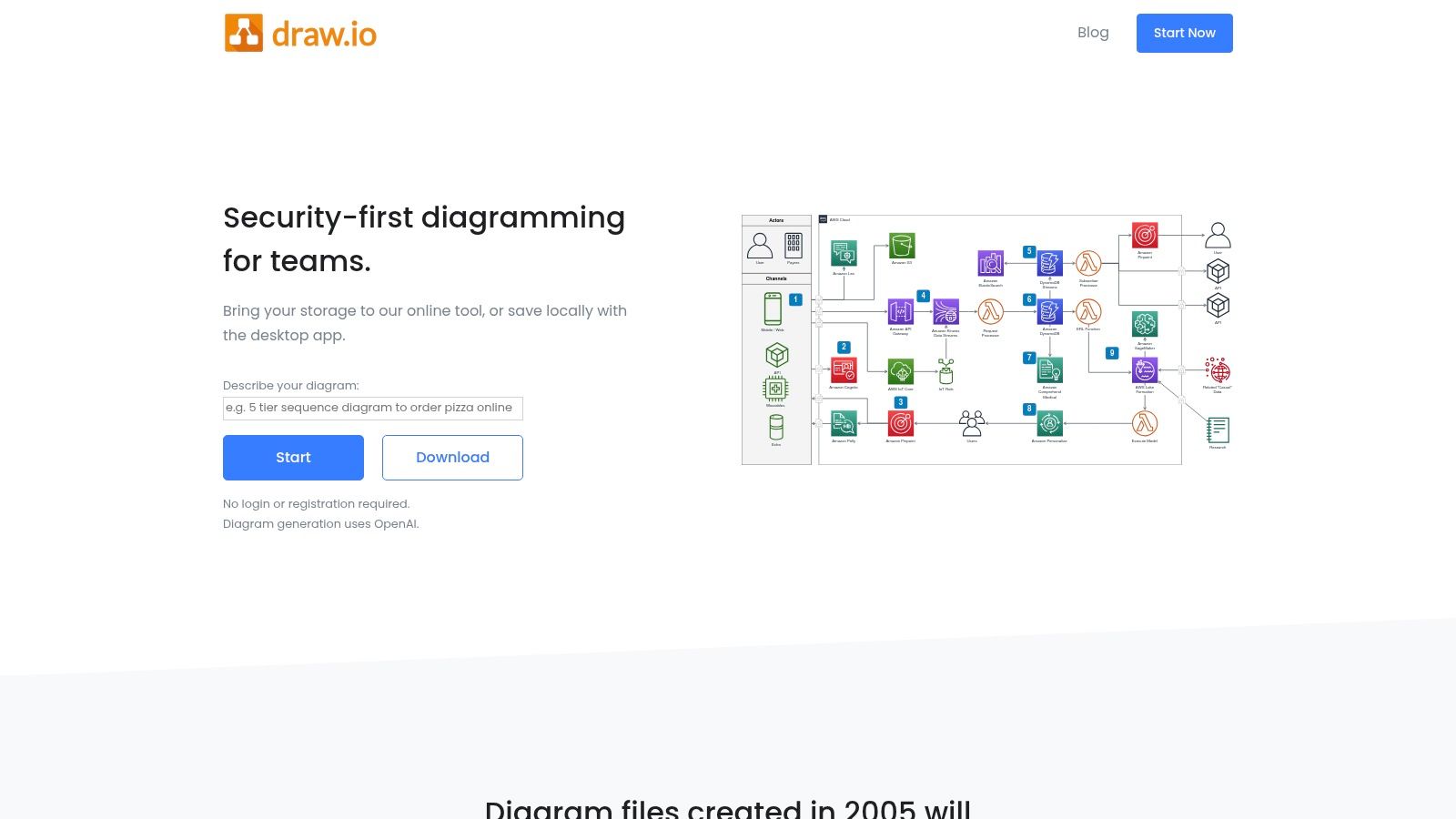
Its core philosophy is user control. You choose where to save your work, with seamless integrations for Google Drive, OneDrive, GitHub, and GitLab, or you can save files directly to your local device. For those who prefer working offline, diagrams.net offers full-featured desktop applications for Windows, macOS, and Linux. This hybrid online-offline capability sets it apart, ensuring productivity regardless of internet connectivity. While the interface can feel a bit dense for newcomers, its comprehensive feature set and commitment to being a genuinely free, high-quality tool secure its high ranking.
Website: https://www.diagrams.net
Struggling to keep your software documentation updated with your diagrams? DocuWriter.ai can automatically generate and maintain your technical docs, ensuring they always reflect your latest designs.
Lucidchart is a highly polished, browser-based diagramming tool that excels in user experience and real-time team collaboration. While it’s a powerful platform for all types of diagrams, it stands out among free UML diagram tools for its intuitive drag-and-drop interface and professional-grade templates that help teams get started quickly. Its focus on collaboration makes it a strong contender for educational purposes and teams that need to work on designs simultaneously, providing features like in-editor commenting and shape-specific notes.
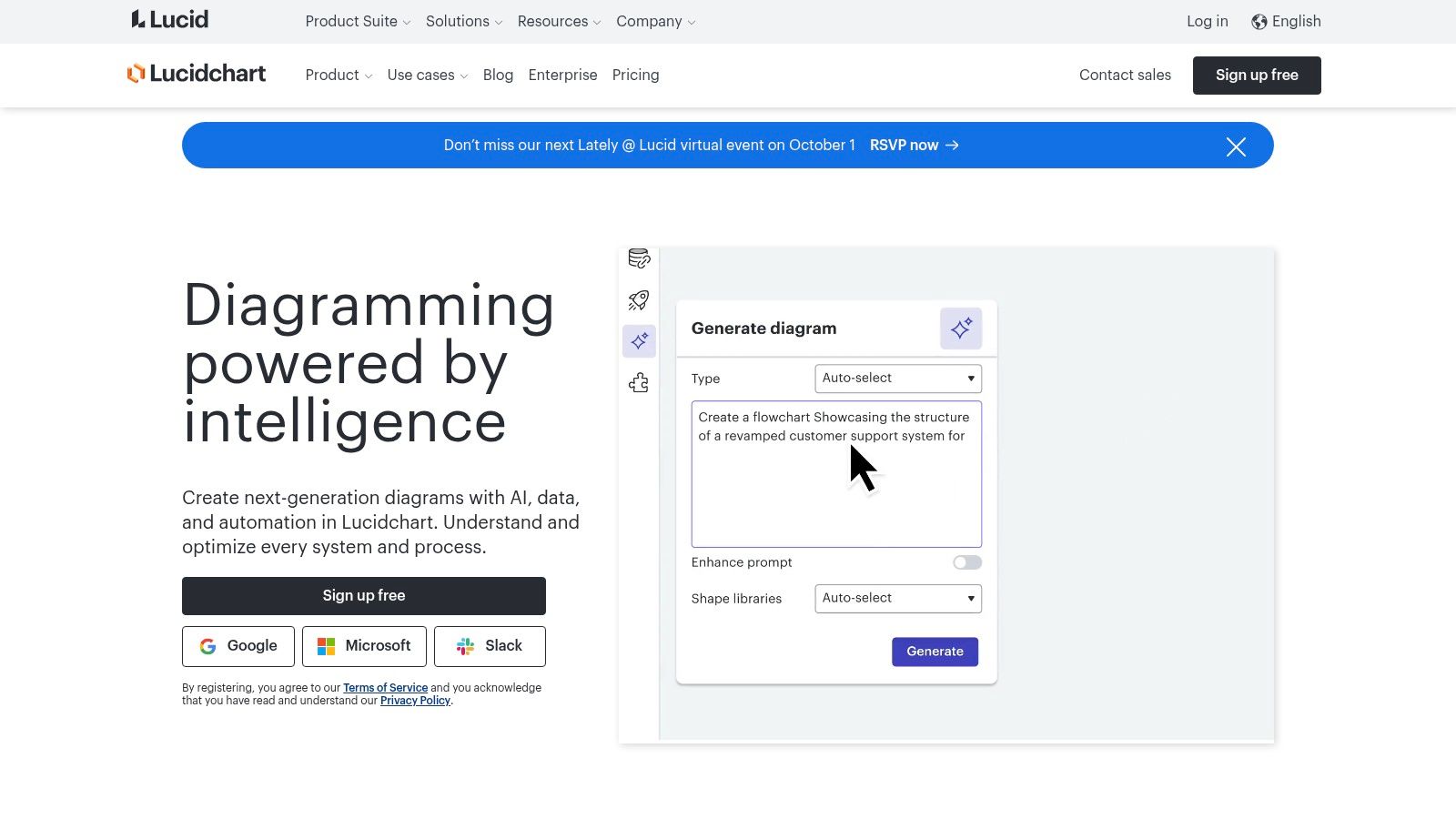
The platform’s main trade-off is in its freemium model. The free tier is quite restrictive, limiting users to just three editable documents and a maximum of 60 shapes per document, which can be quickly exhausted on complex UML diagrams. However, for small-scale projects, learning UML, or evaluating the platform, the free version provides a solid taste of its capabilities. Its seamless integration with major ecosystems like Microsoft 365, Google Workspace, and Atlassian (often on paid tiers) makes it an attractive option for businesses already embedded in those platforms.
Website: https://www.lucidchart.com
Struggling to keep your software documentation updated with your diagrams? DocuWriter.ai can automatically generate and maintain your technical docs, ensuring they always reflect your latest designs.
Visual Paradigm Online stands out as a comprehensive, browser-based diagramming suite that offers one of the most generous free tiers among free UML diagram tools. Its free plan is specifically designed for personal and non-commercial use, providing users with unlimited access to diagrams, shapes, and a clean drag-and-drop editor. This makes it an excellent choice for students, educators, and individual developers learning or working on personal software projects.
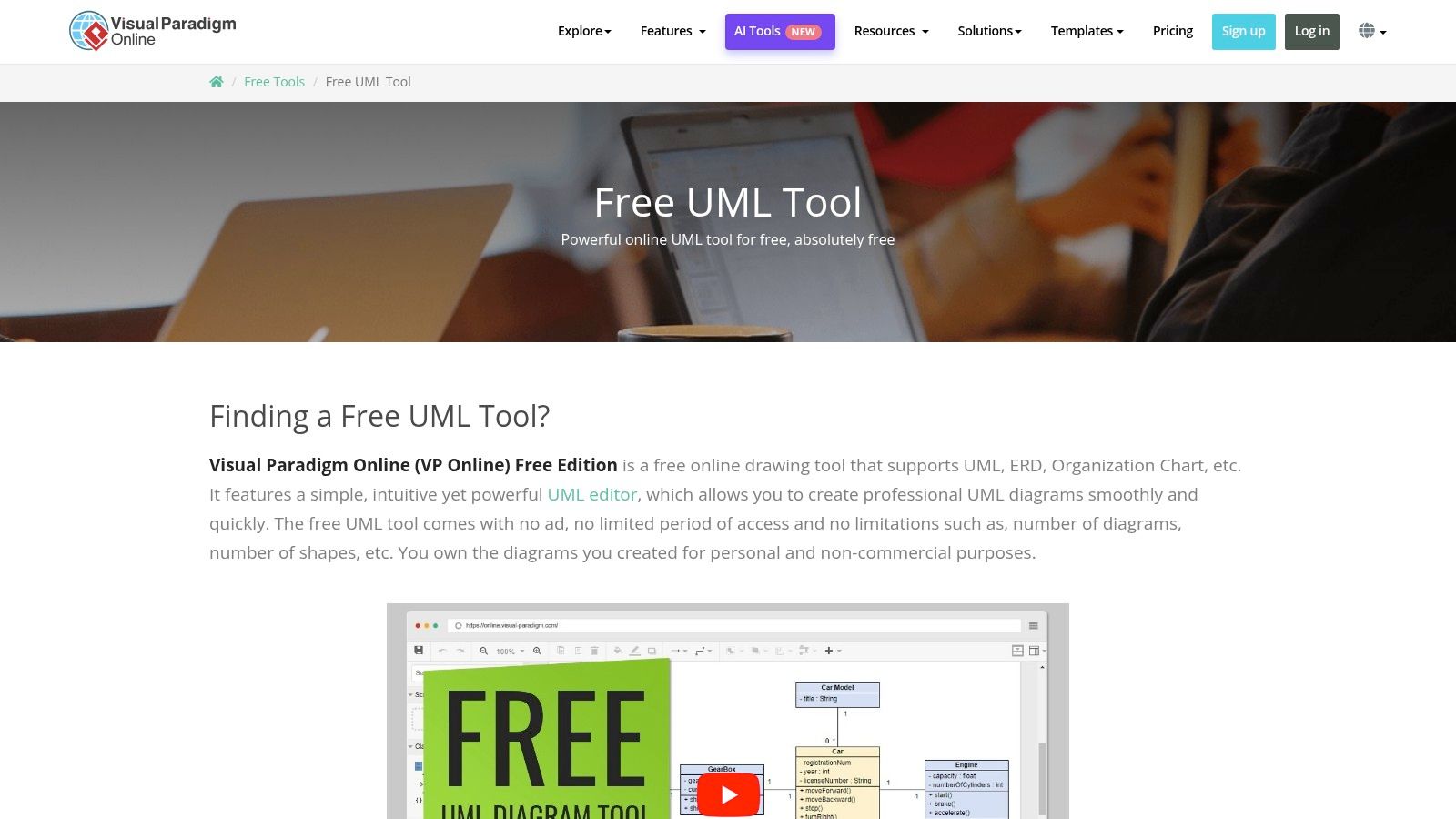
The platform supports a wide array of export options, including PNG, SVG, and PDF, and integrates directly with Google Drive for convenient storage. The editor itself is a major highlight, featuring intelligent snapping connectors and alignment guides that streamline the diagramming process. While its most powerful features and advanced diagram types are reserved for paid tiers, the free offering is robust enough for most standard UML modeling tasks, from class diagrams to complex sequence diagrams. Learn more about how you can create sequence diagrams online using tools like this.
Website: https://online.visual-paradigm.com/diagrams/solutions/free-uml-tool/
Struggling to keep your software documentation updated with your diagrams? DocuWriter.ai can automatically generate and maintain your technical docs, ensuring they always reflect your latest designs.
Visual Paradigm Community Edition stands out as a full-featured desktop environment among free UML diagram tools, designed for serious modeling projects. It provides a robust, professional-grade platform that is perpetually free for personal, educational, and other non-commercial purposes. Unlike simpler web-based tools, it offers a mature and comprehensive UML toolset, supporting over 50 diagram types and including advanced editing features like automated sequence numbering and intuitive inline editing.
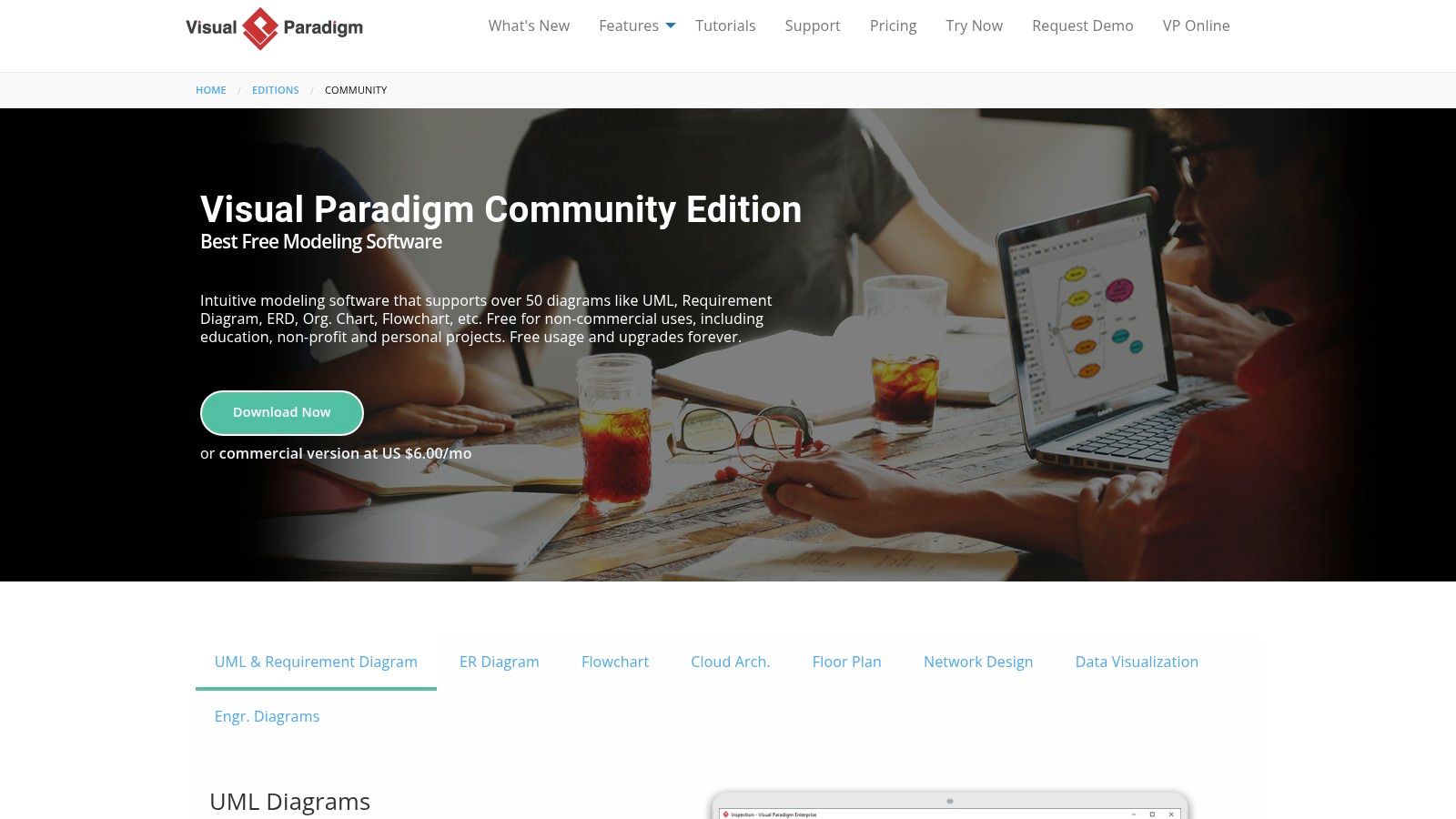
This tool is delivered as a dedicated desktop application for Windows, macOS, and Linux, ensuring reliable offline performance. Its strength lies in providing pro-level conveniences that are often locked behind paywalls in other software. While its powerful feature set presents a steeper learning curve compared to lightweight online editors, the investment is worthwhile for users who need a more rigorous and structured approach to software design and system modeling without the associated cost of a commercial license.
Website: https://www.visual-paradigm.com/editions/community/
Struggling to keep your software documentation updated with your diagrams? DocuWriter.ai can automatically generate and maintain your technical docs, ensuring they always reflect your latest designs.
PlantUML takes a radically different, code-first approach to diagramming, making it one of the most powerful free UML diagram tools for developers. Instead of dragging and dropping shapes, you define your diagrams using a simple, intuitive plain text syntax. This allows for rapid creation and, more importantly, enables diagrams to be version-controlled alongside source code in systems like Git. It’s an open-source tool designed for integration and automation within a development workflow.
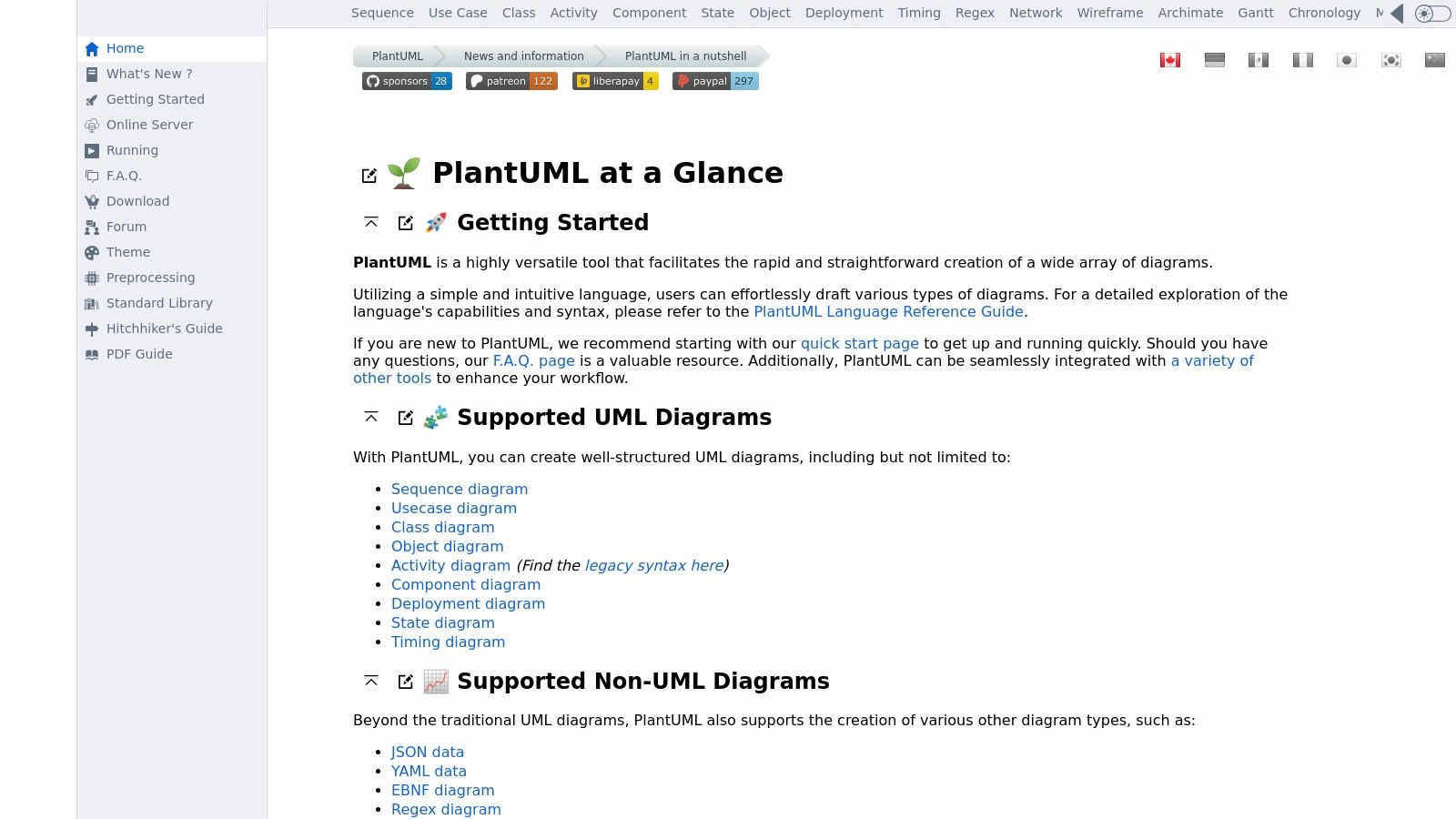
The “diagrams as code” philosophy is PlantUML’s key differentiator. It integrates seamlessly into IDEs, build tools, and documentation generators, allowing diagrams to be automatically updated as the underlying text source changes. While it requires learning a specific syntax and often depends on Graphviz for rendering, the benefit is unparalleled consistency and maintainability in technical documentation. If you’re looking for tools that can create diagrams directly from code, you can explore more on how to find a code to UML diagram generator.
Website: https://plantuml.com
Struggling to keep your software documentation updated with your diagrams? DocuWriter.ai can automatically generate and maintain your technical docs, ensuring they always reflect your latest designs.
Mermaid is a unique entry among free UML diagram tools, operating not as a graphical editor but as a JavaScript-based diagramming and charting tool that uses a simple, Markdown-inspired text syntax. This “diagrams as code” approach is perfect for developers who want to embed consistently rendered diagrams directly into their documentation, wikis, and static websites. It eliminates the need for external image files, allowing diagrams to be version-controlled alongside source code in platforms like GitHub and GitLab.
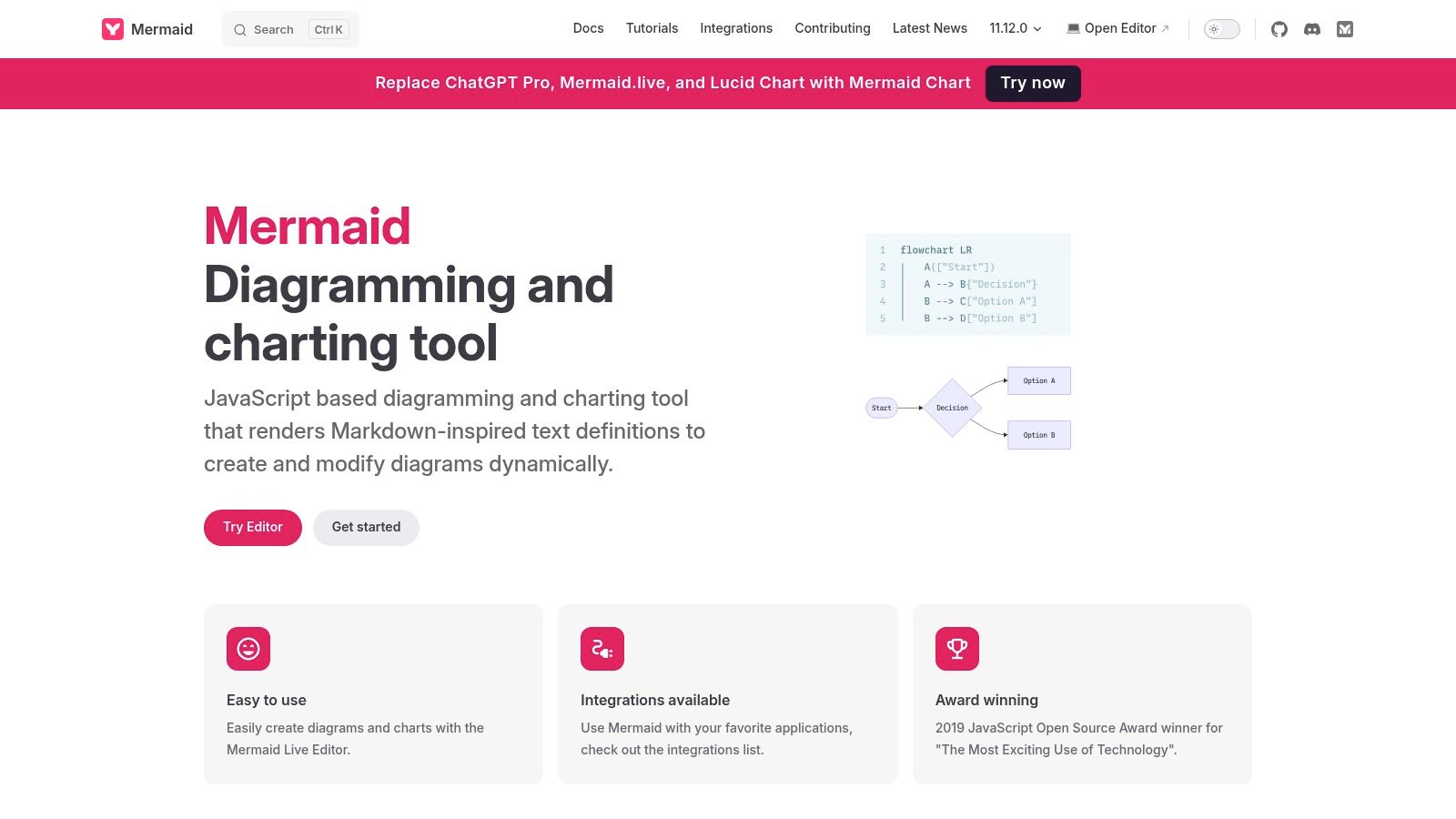
The primary strength of Mermaid is its seamless integration into the developer workflow. By defining diagrams in plain text, engineers can easily create, review, and update them through pull requests, ensuring documentation stays synchronized with the codebase. While it doesn’t offer the comprehensive UML coverage or the drag-and-drop ease of dedicated modeling suites, its focus on class and sequence diagrams covers many common software design scenarios. Its simplicity and native support in numerous Markdown-based platforms make it an incredibly efficient tool for maintaining living documentation.
Website: https://mermaid.js.org
Struggling to keep your software documentation updated with your diagrams? DocuWriter.ai can automatically generate and maintain your technical docs, ensuring they always reflect your latest designs.
yEd Graph Editor is a powerful desktop-first diagramming tool that stands out due to its exceptionally strong automatic layout algorithms. While it is a general-purpose graph editor, it offers a dedicated palette for UML, making it a viable and efficient option among free UML diagram tools, especially for large, complex diagrams. It is available as a free desktop application for Windows, macOS, and Linux, and also offers a convenient browser-based version called yEd Live for online access.
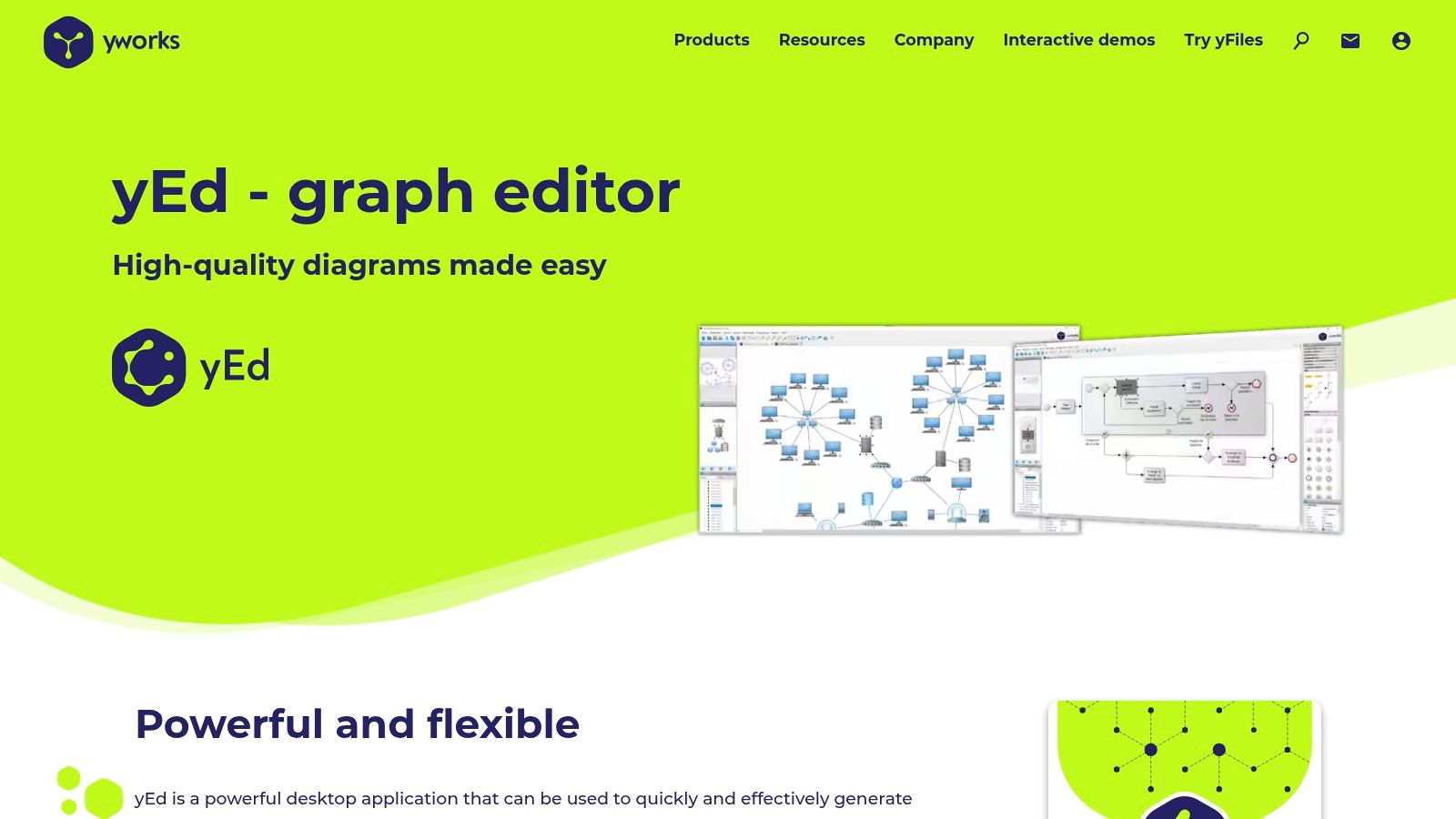
The key differentiator for yEd is its ability to automatically arrange diagram elements into clean, readable layouts with a single click. This feature can save a significant amount of time when creating intricate class diagrams or activity flows. The tool supports importing data from various formats, including Excel and XML, to generate diagrams programmatically. While its user interface feels more like a technical graphing tool than a dedicated UML modeler, its layout engine and cost-free commercial use license make it a compelling choice for engineers visualizing complex systems.